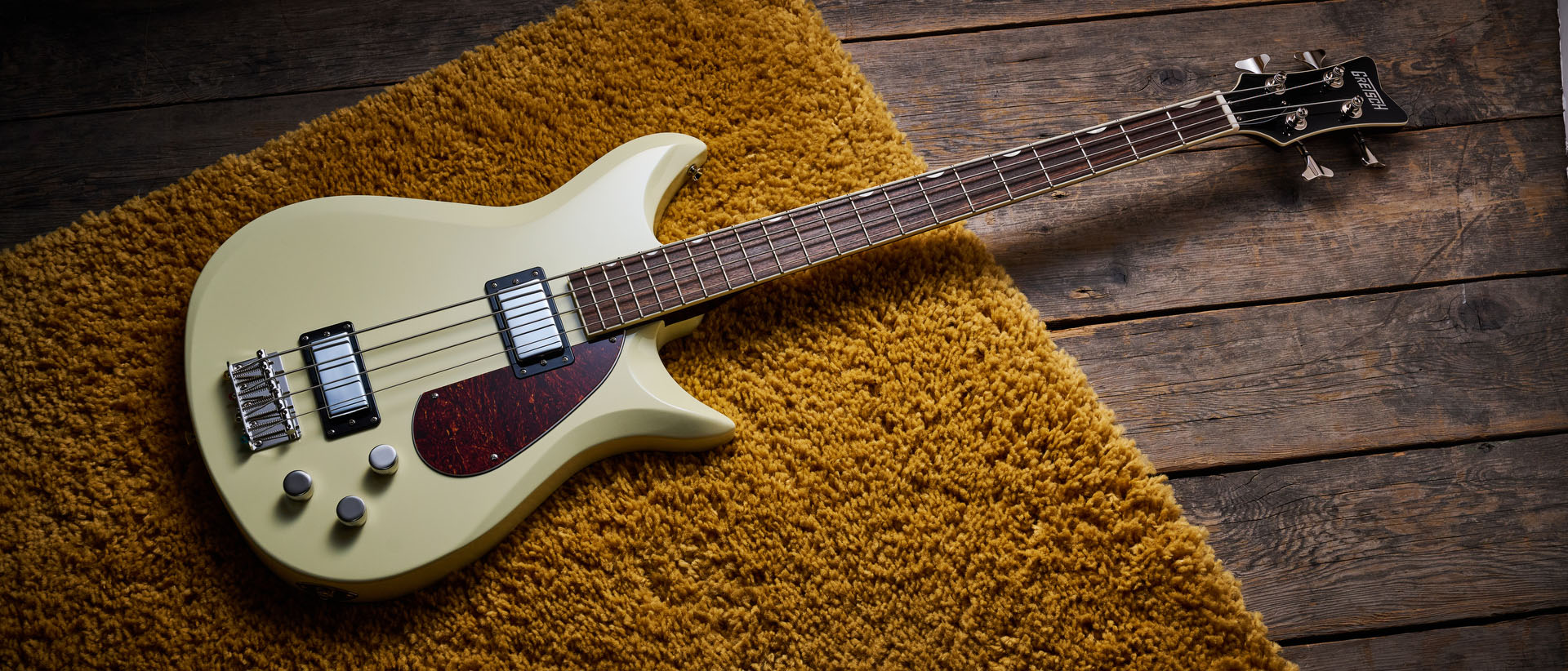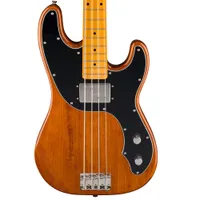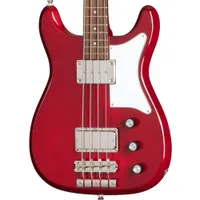Guitar World Verdict
If you're after old-school sounds, and the looks do it for you, then the CVT bass is a good-value entrant to the retro bass guitar market. It's compact in length, with a slim neck, and it's certainly got some interesting tones on tap too.
Pros
- +
Great value, and a good build for its price.
- +
Interesting suite of old-school tones.
- +
Medium-scale neck is comfortable, and something a little different.
Cons
- -
The body's ergonomics are far from ideal.
- -
With the best will in the world, it looks quite ungainly.
You can trust Guitar World
What is it?
Unlike long-time parent company, Fender, Gretsch isn't known for its mainstream success in the bass guitar market.
Sure, there have been dalliances with short-scale, vintage-inspired models such as the Junior Jet, and the odd bass variant of the company’s esteemed hollow-body guitars too, but none have ever crossed over to wider approval – they’re just a bit too niche.
If any Gretsch model stands a chance at altering those fortunes, the Corvette might be it. An elegant but relatively under-the-radar solid-body shape from the company’s past, the Corvette originally debuted in 1961; a riposte to Gibson’s then-new SG and Epiphone’s double-cutaway solid-body range.
Examples were played by Rory Gallagher and even Jimi Hendrix, but the model has often been left to languish in the history books. Now though, Gretsch have rebooted the idea for the 21st century, with the brand-new CVT range.
We’ve already tested the electric guitar version, the Electromatic CVT, but it’s time to see how the Electromatic bass (the first ever four-string variant of the Corvette) stacks up.
Specs

- Price: £499/$419/€555
- Made: China
- Type: Medium-scale four-string bass guitar
- Body: Mahogany
- Neck: Bolt-on, mahogany - 'Performance C' shape
- Fingerboard: Laurel, pearloid Neo-Classic Thumbnail inlays
- Scale length: 32"/813mm
- Nut/width: Bone, 39.6mm
- Frets: 20, medium jumbo
- Hardware: Sealed die-cast tuners, nickel-plated adjustable 4-saddle bridge
- String spacing at bridge: 19mm
- Electrics: Low-Down alnico single-coil (bridge), Low-Down alnico humbucker (neck), bridge pickup volume, neck pickup volume, master tone
- Weight: 8.2lb/3.7kg
- Left-handed options: None
- Finishes: Vintage White (as reviewed), Bristol Fog, Havana Burst
- Case: Not included
- Contact: Gretsch
Build quality
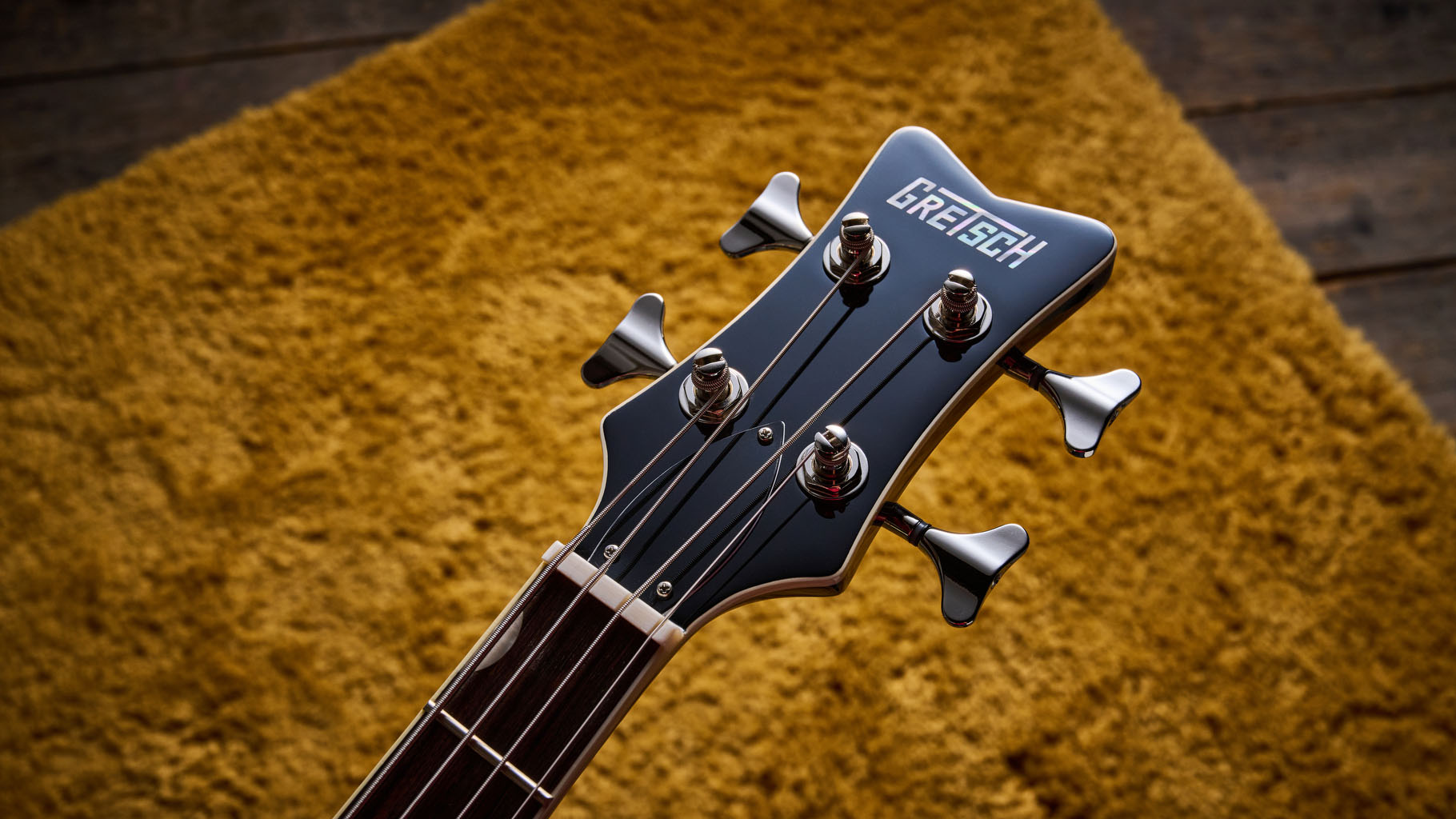
Build quality rating: ★★★½
In a tried-and-tested white and tortoiseshell colour scheme, the CVT pulls the trick of looking retro while not directly resembling any instrument of old.
All the latest guitar news, interviews, lessons, reviews, deals and more, direct to your inbox!
It's not a classically attractive shape, though – the CVT six-string’s design language might be described as a slightly gawkier reboot of the original Corvette, and that carries through to the four-string.
The teardrop pickguard specific to the bass doesn’t help, not really complementing the lines of the body.
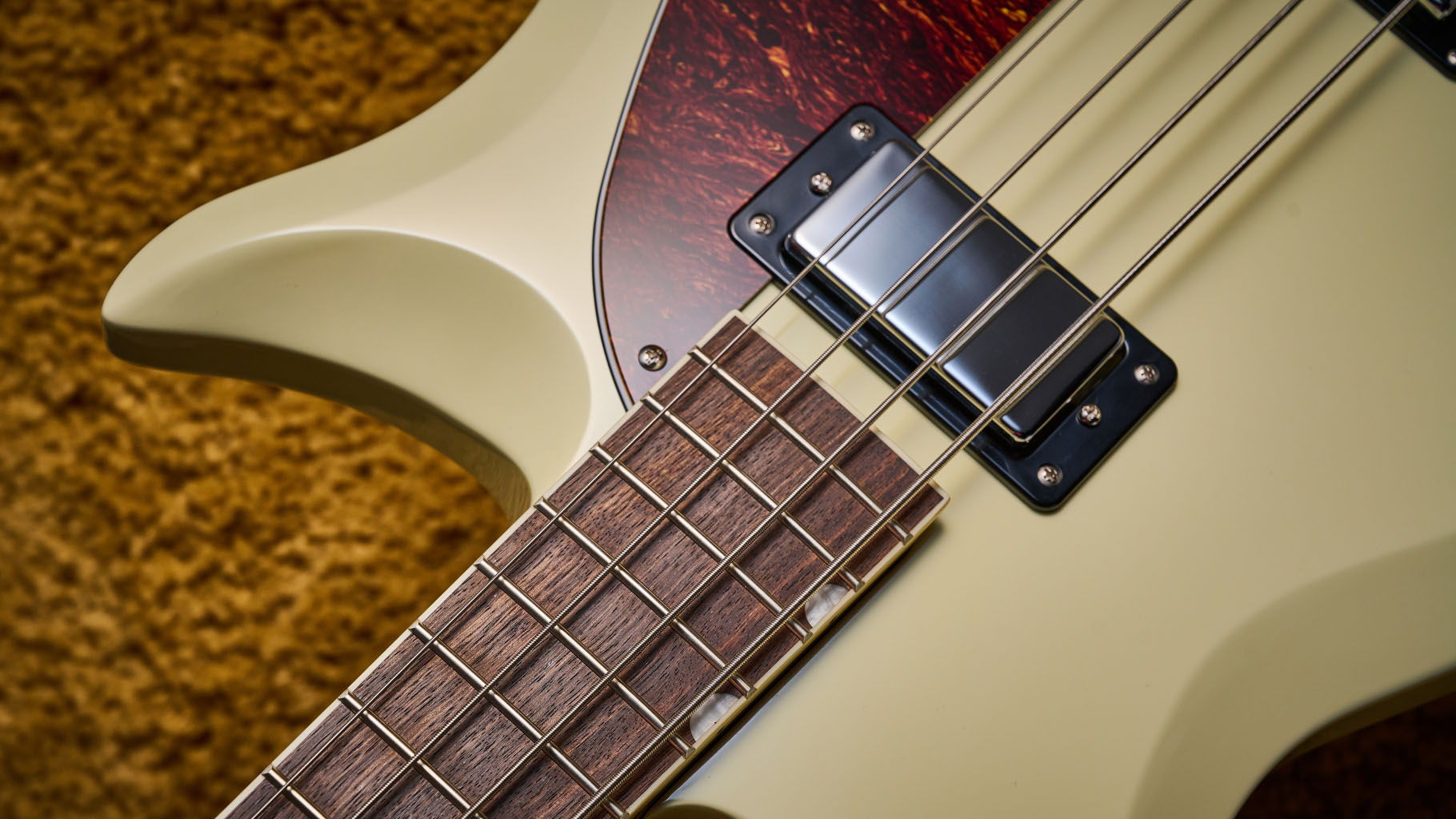
Build quality is generally solid, though – the neck fit leaves a bit of a gap and the edge of the nut could be rounded off, but the hardware feels solid for the price, and the mahogany body and neck have a decent acoustic ring to them.
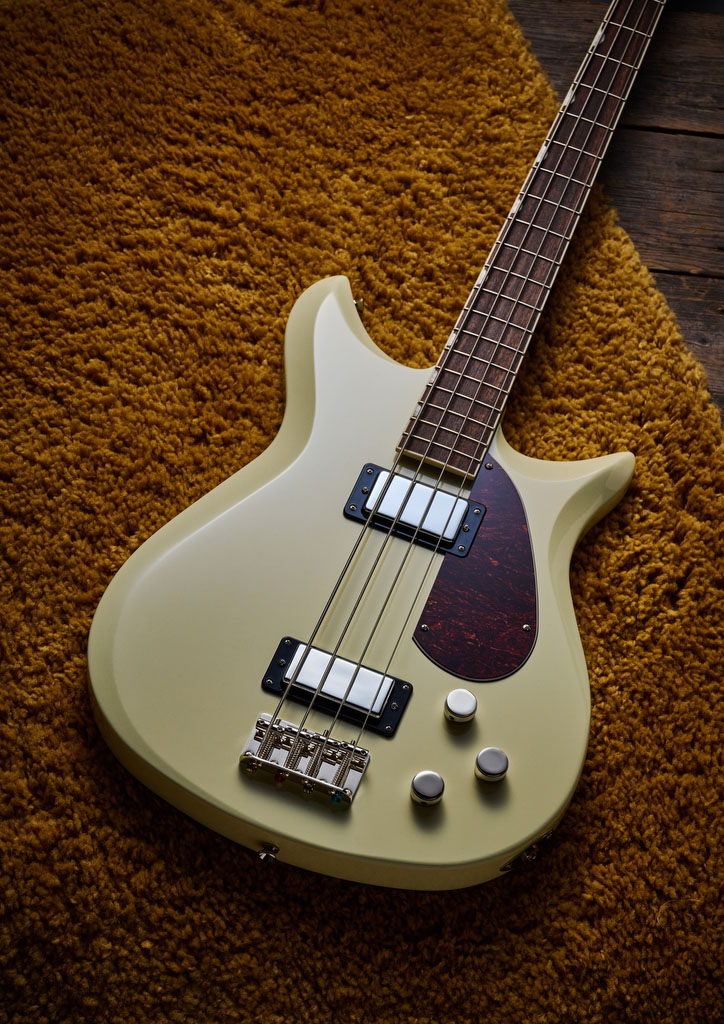
Special mention for the trad Gretsch knurled chrome knobs; a small thing, maybe, but these are controls you touch frequently. They might easily have been ditched for something more cost-effective in plastic - it’s nice that they weren’t.
Alongside the classic edge-position inlays, and the nicely-bound neck and headstock, care has clearly been taken in the details.
Playability

Playability rating: ★★★☆☆
The weight isn’t excessive but the body feels bulky
The slightly awkward shape of the CVT bass rears its head again while playing; it isn’t the most ergonomic. The weight isn’t excessive but the body feels bulky.
The contouring in the elbow area is strictly aesthetic, doing nothing for comfort. The bass is well-balanced when played standing up, though, and the bolt-on mahogany neck is slim and comfortable.
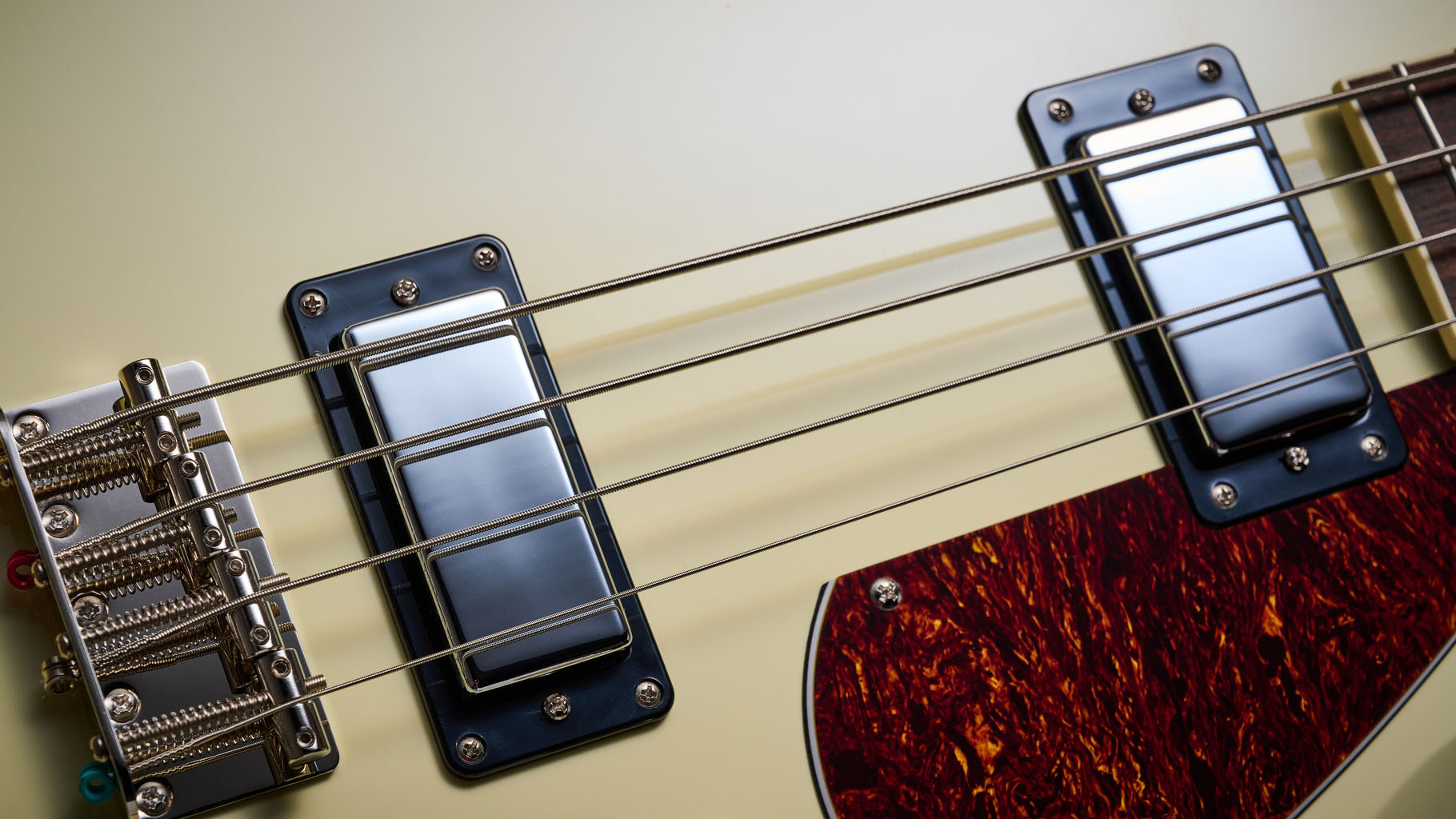
Even though it’s a 32” scale, not far off a full-length bass, it’s also relatively compact due to the pickup and bridge placement, potentially suiting players of a smaller stature.
The two pickups are far apart - butted right up against the bridge and neck respectively. This leaves no ideal anchor point for the plucking-hand thumb, and so the CVT might be more suited to pick-style players.
Sounds

Sounds rating: ★★★★☆
The pickups themselves are two chrome-covered units of odd sizes - the bridge pickup is roughly mini-humbucker sized, though actually a single-coil. The neck unit is a slightly bigger humbucker, slightly smaller than the so-called ‘mudbucker’ found on Gibson EB models.
With both pickup volumes at full, the two combine for the CVT's most conventional sound. Even with the zingy overtones of the new strings, it's warm and classic.
Through some classic Ampeg SVT and Acoustic 360 bass amp emulations, there's a distinctive hollow ‘ring’ to the tone, but also plent of low end thump from that neck pickup.
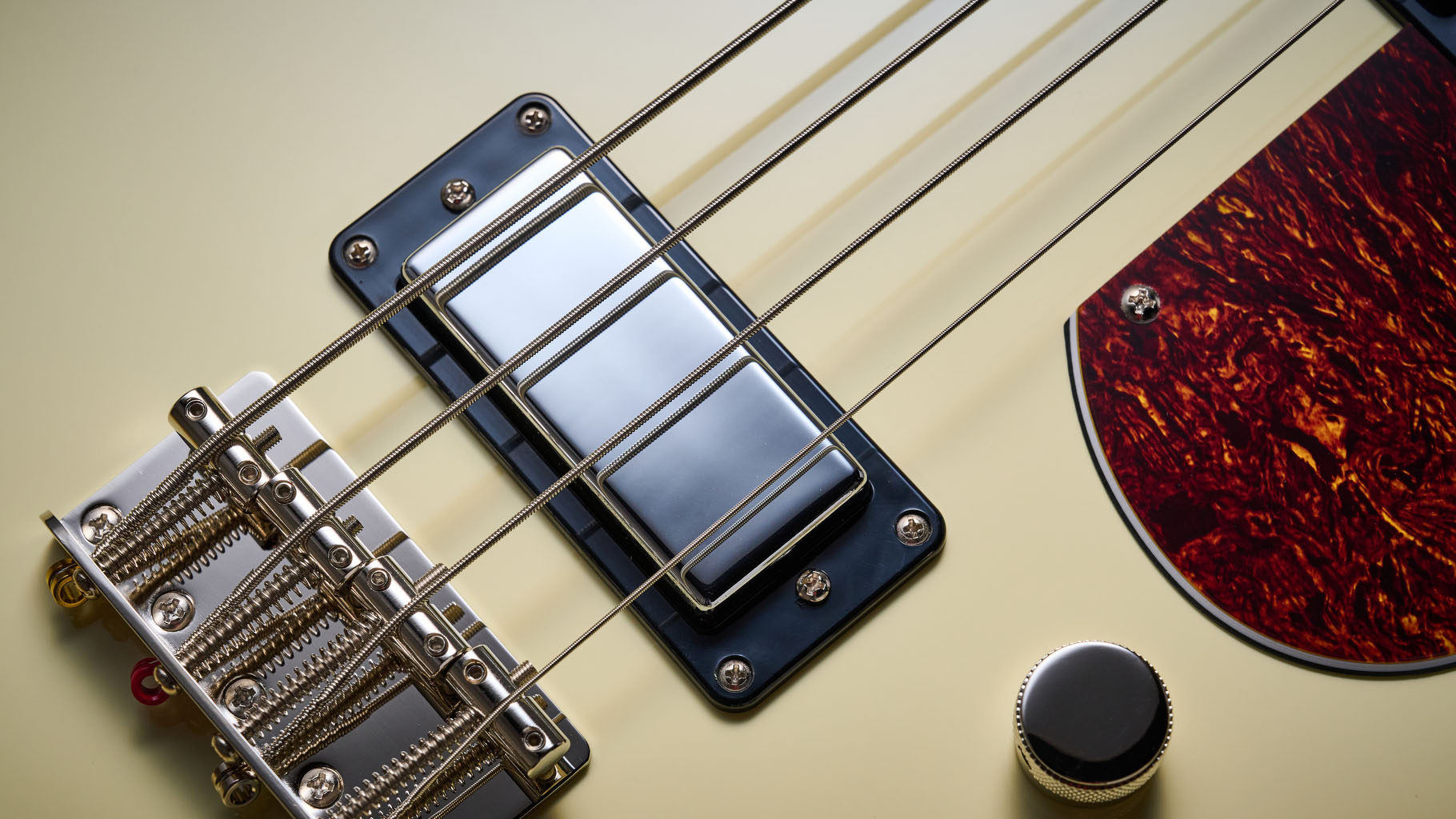
The bridge pickup alone, being right at the very end of the string's vibrating length, is light on bass frequencies but emits a pleasing, high mid-forward growl that could pair quite effectively with some trashy-sounding distortion.
As might be expected, the neck pickup is pretty much the opposite - bass and low mids are the order of the day here.
It's not quite as full-bodied as the Squier Telecaster Bass I tested recently, but it absolutely nails the sounds of the ‘60s when palm muted and picked. Stick a strip of foam in front of the saddles and you're there.
Verdict
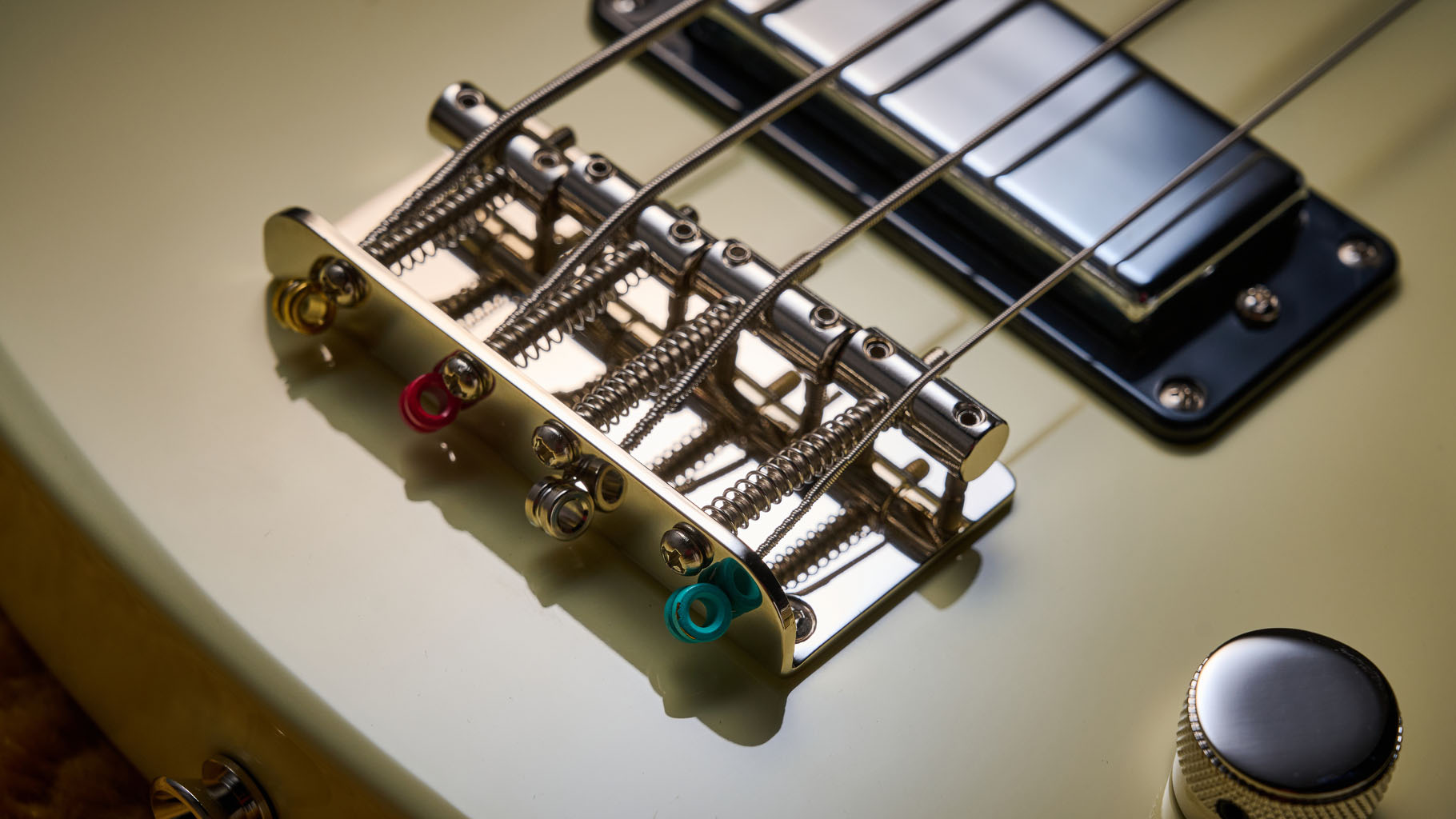
There are a few different ways Gretsch could have approached a bass model for the new CVT range; it could have ended up quite conventional, but what we have here is from the leftfield. With its medium scale and unusual pickup configuration, it has a sound of its own.
With its medium scale and unusual pickup configuration, it has a sound of its own
Its aesthetics are a little unresolved and the ergonomics not fantastic, but the former at least is a matter of taste. If you want a quirky vintage-sounding bass at a great price, it's worth auditioning.
Guitar World verdict: If you're after old-school sounds, and the looks do it for you, then the CVT bass is a good-value entrant to the retro bass guitar market. It's compact in length, with a slim neck, and it's certainly got some interesting tones on tap too.
Test | Results | Score |
|---|---|---|
Build quality | Some nice touches of class in the design, although there are rough edges. | ★★★½ |
Playability | The body shape is a bit ungainly and the ergonomics suffer. Pickup placement makes fingerstyle challenging. | ★★★☆☆ |
Sounds | Some real vintage vibe here, with some growl to boot. | ★★★★☆ |
Overall | A real try before you buy shape – make sure you're comfortable with ergonomics and you may find an interesting affordable leftfield bass here. | ★★★½ |
Also try
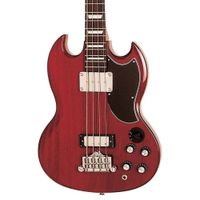
Epiphone EB-3 - $449 | £349 | €399
An acquired taste, but a classic. Is the Gretsch's pickup configuration a hat-tip to this famed ‘SG bass'?
Squier Classic Vibe Telecaster Bass - $474 | £449 | €499
A fabulous leftfield option, with cool retro aesthetics and a distinctive “thump”.
Hands-on videos
Gretsch
You must confirm your public display name before commenting
Please logout and then login again, you will then be prompted to enter your display name.
